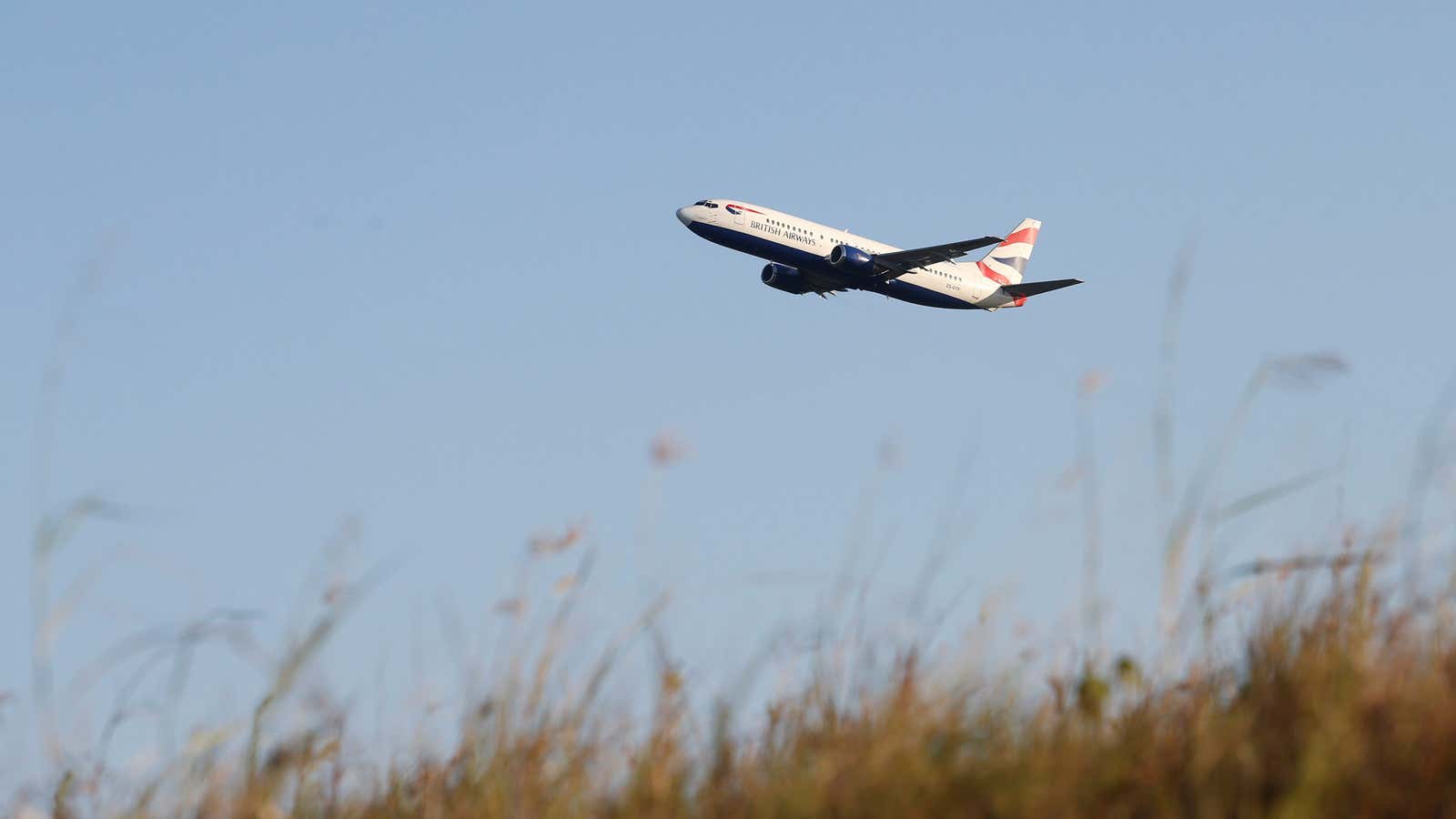When it comes to generating revenue in Africa’s airspace, global carriers are the biggest winners with only two African airlines in the top 10 most lucrative air routes in Africa, a new study finds.
Topping the list was Emirates, whose flights to cities including Johannesburg, Cairo, and Cape Town earned it over $830 million between April 2018 and March 2019. British Airways, which runs the most flights in the world’s only billion-dollar route, earned almost half a billion dollars in its annual flights to South Africa’s major urban areas. Connections to West Africa appeared only once in the list with Air France’s Abidjan-Paris flights raking in $175 million.
The top African airline in the most rewarding routes list was the state-owned Angolan national carrier TAAG. The firm earned over $231 million from its flights from Luanda to the Portuguese capital of Lisbon. The other African contender in the list was South African Airways, which gained $185 million from flying between Cape Town and Johannesburg.
The study was by air travel intelligence firm OAG Aviation which analyzed airline networks, frequency of flights, and destinations to reveal which air paths generate the highest revenue.
Conspicuously missing from the list was Ethiopian Airlines, Africa’s biggest carrier. The state-owned airline is not just the largest by passengers and number of fleet, but by revenue and profit too. Thanks to major political reforms and relaxed visa rules, Ethiopia last year overtook Dubai as a transfer hub for long-haul travel to sub-Saharan Africa too. Earlier this year, the Horn of Africa nation also inaugurated a new passenger terminal that is set to triple the size of its main Bole international airport in Addis Ababa.
While Ethiopian’s absence may be unexpected, one explanation OAG gives is this could be attributed to the fact that many of the routes the carrier operates are relatively short in length and frequency or both, omitting them from the underlying criteria that seem to make a route into the top ten. “I think the absence of Ethiopian is a combination of relatively low-frequency routes—many are served perhaps once or twice a day—and then shorter haul sectors with less business class capacity,” says the executive vice president of OAG Aviation, John Grant
Indeed, out of the 123 destinations in five continents that Ethiopian flies to, more than half are in Africa. And despite Ethiopia’s rise as a gateway into Africa, South Africa still commands a lead when it comes to the share of passenger traffic and aircraft movement.
Another omission from the list is London-Lagos route, which British Airways has dubbed as a key profitable market. But Grant says both “BA and Virgin both have one flight a day so hardly likely to have the frequency to break into the ranking.”
Across the world, the business environment for airlines has deteriorated, with the International Air Transport Association downgrading 2019 profit outlooks from $35.5 billion to $28 billion. Part of this challenge comes from rising fuel prices and weakening global trade but also from the grounding of the Boeing 737 Max after two deadly crashes. The accidents have prompted legal challenges and pushed airlines to rethink their growth strategies.
But even with the signing in 2018 of the Single African Air Transport Market agreement aimed at opening the continent’s skies, carriers continue to face challenges in terms of taxation, costs, infrastructure, and regulation. An OAG analysis from April showed intra-African flight frequency and capacity both declined by almost 6% this year, proving there’s still a lot to be done when it comes to liberalizing air travel in Africa.
Sign up to the Quartz Africa Weekly Brief here for news and analysis on African business, tech and innovation in your inbox
